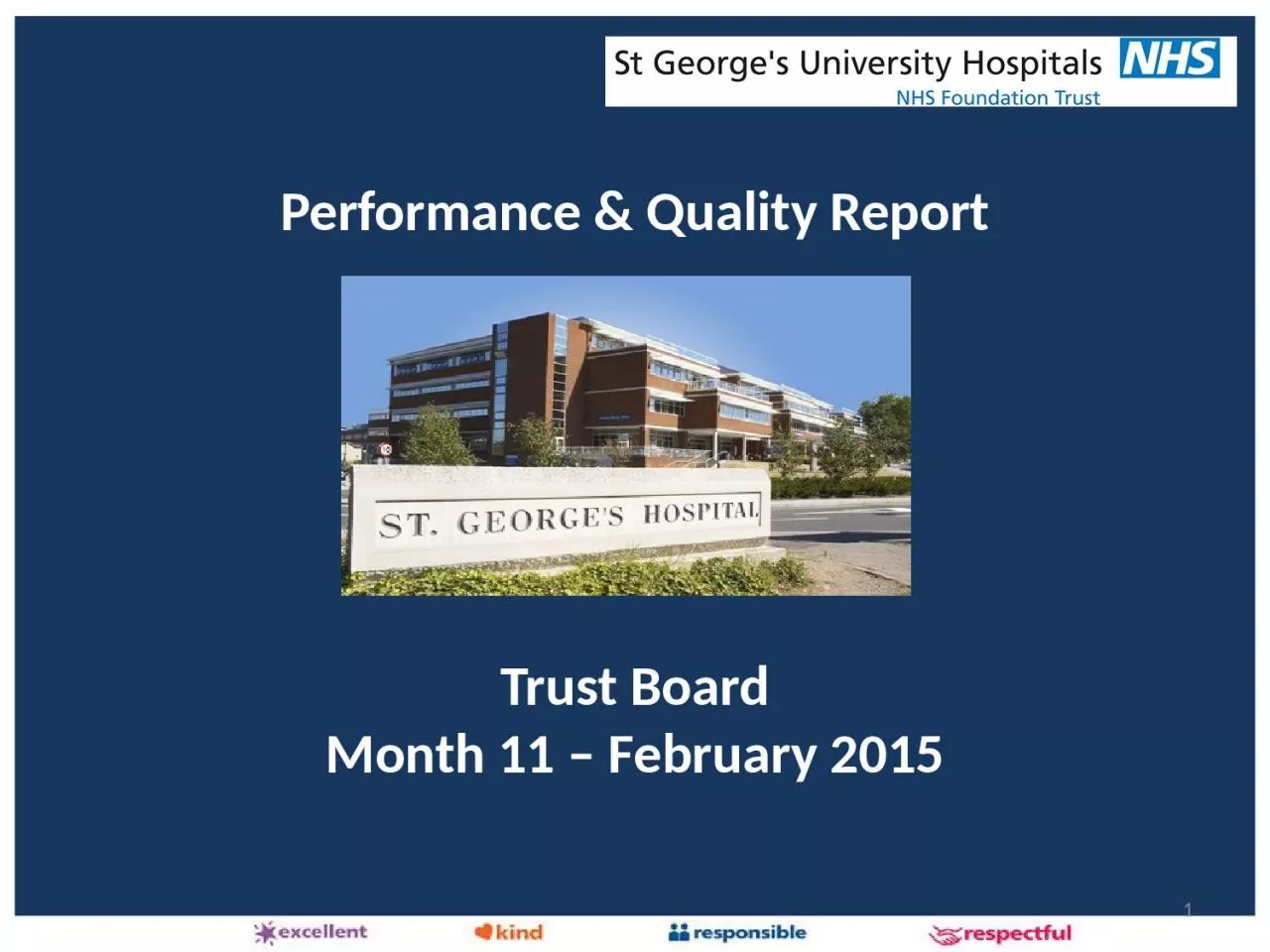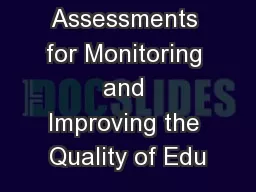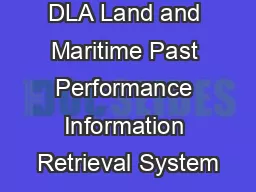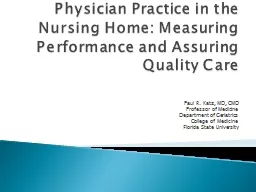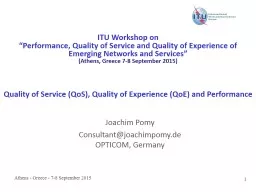PPT-Performance & Quality Report
Author : melanie | Published Date : 2024-02-09
Trust Board Month 11 February 2015 1 2 SECTION CONTENT PAGE 1 Executive Summary 3 2 Performance against Frameworks Monitor Risk Assessment Overview 5 TDA Accountability
Presentation Embed Code
Download Presentation
Download Presentation The PPT/PDF document "Performance & Quality Report" is the property of its rightful owner. Permission is granted to download and print the materials on this website for personal, non-commercial use only, and to display it on your personal computer provided you do not modify the materials and that you retain all copyright notices contained in the materials. By downloading content from our website, you accept the terms of this agreement.
Performance & Quality Report: Transcript
Download Rules Of Document
"Performance & Quality Report"The content belongs to its owner. You may download and print it for personal use, without modification, and keep all copyright notices. By downloading, you agree to these terms.
Related Documents

